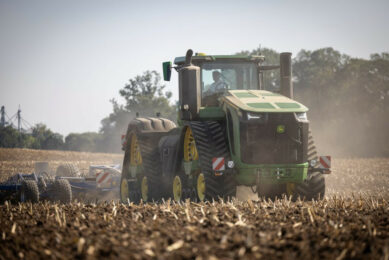John Deere launches No-Till Planter in South Africa

John Deere South Africa introduced the 2100 Series No-Till planter, with variable rate metering.
The John Deere 2117 planter comes from Brazil, the country that is probably the World’s leading exponent of No-Till cropping. The planter is claimed to be able to plant under any conditions and it was certainly put to the test on this farm in the KwaZulu-Natal Midlands.
Text continues underneath image
Flat out to get the crop in
2018 has proved to be a difficult season with conditions going from too dry to too wet and back again. Lots of time was lost waiting for the right planting conditions and then it was flat out to get the crop in before the window closed.
Text continues underneath images
John Deere controller
The farm plants at 30” (762mm) row spacing and the 2117 plants 10 rows. Seed is supplied from a central hopper to individual VacuMeter units on each row. The planter is set up for precision planting with a John Deere controller for section control as well as variable rates. Two fertiliser hoppers can be separately switched on and off so that section control of fertiliser application is possible for each 5-row section.
Text continues underneath images
Variable fertiliser application
Fertiliser application rates are also variable, and these can be controlled by a prescription map. The unit is pulled by a John Deere 8260R, rated at 260hp and the combination can plant about 5ha/hr.
Join 17,000+ subscribers
Subscribe to our newsletter to stay updated about all the need-to-know content in the agricultural sector, two times a week.



